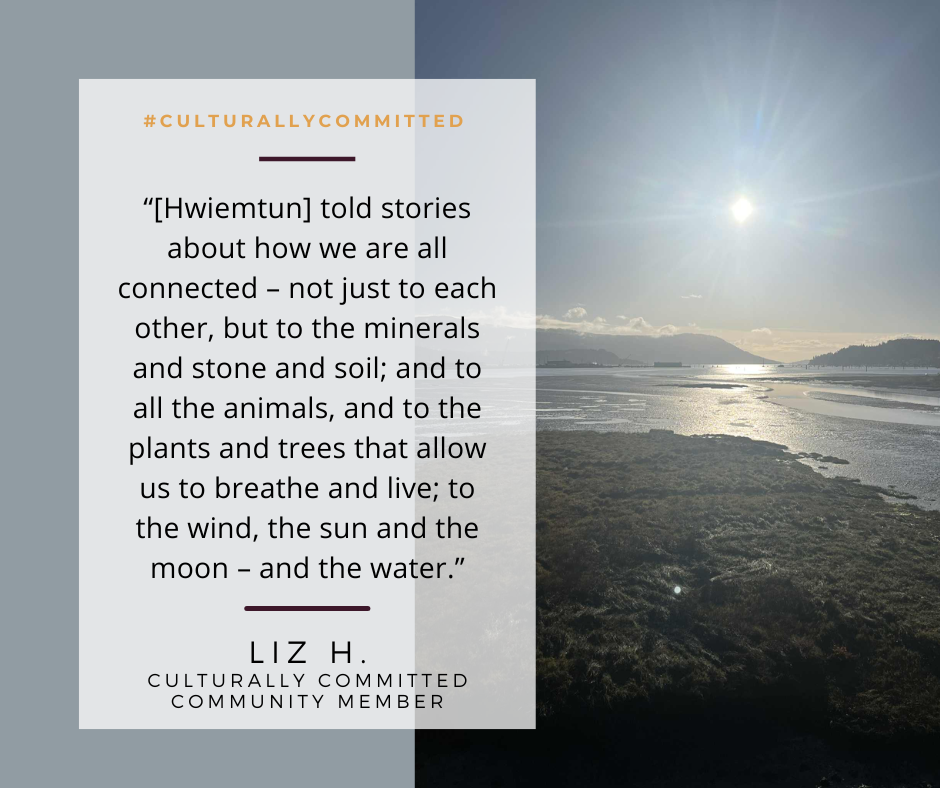Part of the Whole
- Kim Trottier

- Oct 7
- 4 min read
This week’s Teachings Tuesday comes to us from one of our cherished community members, Liz. Her words carry us to the Cowichan Estuary on the morning of the autumnal equinox, where land, water, and story meet. Liz reflects on the restoration of the estuary, the history held in this place, and the teachings that remind us of our deep connection with all beings. We are grateful to Liz for offering her voice, her reflections, and her heart.
On the morning of International River Day, on the autumnal equinox, September 21, 2025, I walked the dike of the Cowichan Estuary.
I'm a white settler woman from Treaty 29, land of the Anishinaabe and Neutral People. I moved to the Island in August 2020, and I think my first walk here was sometime in September 2020.
Since then, I've walked here many times on my own, with my sisters, with various dogs, with my partner-at-the-time; always in the morning, and sometimes, catching the sunrise over Salt Spring Island. This is a place that birders and photographers mill around for hours, sighting kestrels and herons and falcons; small and large birds in flight and in rest. Hunters frequent the area for ducks. I personally love the red-wing blackbirds that are here, strangely, for most of the year. In Ontario, where my Dutch parents made a home on a dairy farm, the red-winged blackbirds sing of spring. Their song here is different, and they raise my soul.
I walked out at a very low tide that morning. And I wondered, as the Estuary Restoration project continues, how long will I be able to do this walk? What will this liminal space between ocean and land transmute into?
Jared Qwustenuxun Williams, in a Culturally Committed workshop in September, presented a history of the area – how the First Nations in this valley grew food here before settlers found their way to the Island. How their agriculture supported a thriving community. How managing the estuary was part of their way of life, living in reciprocity with the salmon.
He walked us through the project currently in progress. He showed us the plants that have started to be grown to be used for crops, replacing hay fields and corn – replacing agricultural monocultures. These plants are only “starting” to be grown in relation to a new nursery on the land– these crops have been around for generations. He explained the science behind the plans for the project, and how the plans will protect the roadways and housing.
Even Microsoft co-pilot tells me that this project is important, for stopping the loss of sediment and slowing down the encroachment of the rise of sea water, for protecting species such as salmon, shellfish, crabs, migratory birds (so many birds on this flight path!), and even orcas; and how the letting the marsh take over will even contribute to carbon storage.
Ever since this project started over the last few years, my heart has felt full with the knowledge that this is a good plan, that it makes sense, that it is a way to bring back traditional food systems that will not benefit just First Nations people of the area – we will all benefit from access to traditional and eco-system specific agriculture and foods. I for one look forward to trying Blue Camas and Chocolate Lily root.
And yet....the resistance to this project surprises me. I've read the plan. I've read the history of the area. Maybe I'm naïve, but this farmland is going to be lost one way or another over the next few years – from the rise of the ocean in combination with the degradation of the soil. Why would we not try to be proactive with a plan that will benefit everyone? Sure, my early morning walks will need to change. But the sun will still rise over Salt Spring Island. The birds will flock over in their North and South migrations. Change happens, continually; and if change supports better protection for the ocean, the marshes, and the land, and in doing so also provides alternative food sources that use less resources, then why not back this plan?
Later on in the morning on International River Day, I went to Quw'utsun Sta'lo' Skweyul (Cowichan River Day). The Quw'utsun Stal'lo' sparkled under the sun; people drawn to the banks by the sun and the ripples. Hwiemtun (Fred Roland) was telling stories on the side of the river of what has been happening to the river and the estuary and the salmon and how intertwined our life is with the healthfulness of this eco-system.
He told stories about how we are all connected – not just to each other, but to the minerals and stone and soil; and to all the animals, and to the plants and trees that allow us to breath and live; to the wind, the sun and the moon – and the water.
These principles of connection with everything are core to every teaching I have heard of or read of or received from elders and mentors and teachers. We must all care for each other, and "each other" is everything in the world. There is enough for all
.
~ Liz

Reading Liz’s reflection, I found myself sitting with the idea of change—how it can stir up resistance, but also how it can open the door to something beautiful and necessary. Her words left me feeling grounded, hopeful, and a little more connected to the truth that we are part of something much bigger than ourselves. I’ll be carrying that with me into the week ahead.
🧡 Kim





Comments